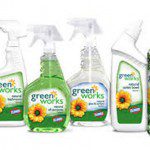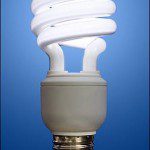Potomac’s Present & future
By • April 11, 2014 0 2232

We live near it, skim its surface, appreciate its natural beauty — and taste it every day. It is the powerful Potomac River. It is our lifeline. It is our future.
The river and its water, which we drink, are in the news of late with discussions about D.C. Water’s plans for sewerage overflow at Georgetown Waterfront Park and other work in the District, improvements to the Washington Aqueduct and the issue of fracking far upstream of the Potomac watershed.
With April as Earth month and Earth Day April 22, this spring looks to the Potomac, even as we get ready to go boating on it. One of its greatest defenders is Stephanie Flack, who spoke recently at meetings with the Citizens Association of Georgetown and at Christ Church. “75 percent of people not on well water are not aware of where their water comes from,” she says. “They have no clue where their water comes from …yet one of the top concerns people have is the quality of their drinking water.” Flack is the Potomac River Project Director for the Nature Conservancy’s Maryland-D.C. Chapter. She speaks with the assurance of a scientist and the passion of a mother as she explains some complex natural actions in a simpler way. With the Nature Conservancy behind her, Flack gets to work close to her home in her backyard, as she says, “the Potomac.”
The Nature Conservancy was founded in 1951 and now has more than one million members. It works in all 50 states and more than 35 nations, it reports, and has “protected 119 million acres of land and thousands of miles of rivers worldwide — and we operate more than 100 marine conservation projects globally.” Its headquarters is in Arlington, and its CEO Mark Tercek lives in Georgetown.
Also at the March 18 CAG meeting were Thomas Jacobus, general manager of the Washington Aqueduct, and Peggy Fleming, who, with Sean Furmage, directed and wrote the 2012 documentary “Potomac: The River Runs Through Us,” which runs 30 minutes. It was shown to a packed room at the Long & Foster Georgetown office and is highly recommended viewing.
As for the Washington Aqueduct, it was built in 1863 under the direction of Gen. Montgomery Meigs, became fully operational in 1864 and is celebrating its 150th anniversary. While we can celebrate that built infrastructure, Flack says, “We need to think about the natural infrastructure — the forests, the wetlands — that contribute to our water supply…and quality of our water as natural filters.” We can appreciate such engineering feats, she says, but we also “have to think out to the next 150 years and what’s going to happen to the watershed that provides our water…and restoring the area as well.” “It’s a balancing,” she says of maintaining D.C. Water’s structures and pipes. “You can’t make up for nature.
“The 14,000-square-mile watershed of the Potomac River is the primary source of drinking water for more than four million people in the Washington, D.C., metropolitan region,” Flack says. “This is the water that Members of Congress use to brew their coffee, and President Obama uses to wash his hands.”
Flack grew up in Florida. Her father was a developer. She smiles at the irony. Flack earned science degrees from Princeton and Yale and was inspired by her professor, Alison Jolly, who died in February. One of her studies was about the Catskills and New York City drinking water. She worked for the World Bank in West Africa and saw how people directly depend on their environment. “Some people think that world history can be told through the history of the environment,” she says.
“What’s happening in the Potomac watershed is a long-term issue,” Flack says. “We have a lot of population growth and a lot of land-use change and development. My mission is to try to help people understand that and to help motivate people to make long-term perspective investments in protecting and restoring the places where our water comes from.” She is keen to note that the single largest cultivated land crop in the Chesapeake watershed is turf grass. “Pesticide and fertilizer on lawns ends up in the water and has an effect,” she says. For our fight to protect the environment, Flack was worked 18 years at the Nature Conservancy, a nonprofit which says it “is rooted in good science — aided by our hundreds of staff scientists. We pursue non-confrontational, pragmatic solutions to conservation challenges.” Its CEO Mark Tercek wrote “Nature’s Fortune: How Business and Society Thrive by Investing in Nature.” The former Goldman Sachs executive argues that the commercial benefits of environmental protection go beyond paying for themselves.
As far as talks with local groups go, Flack says, “I think there is an appetite for this. There is a need to engage people and have these discussions about local issues…. Who doesn’t care about their water? I would really like to make this a front-of-mind issue for people because it is so tied up with our quality of life and ability to live.”
GREEN FACT VS MYTHS
By Nicole Cusick
Leaving something plugged in even when it is off can increase your energy bill.
FACT: According to a study by the Lawrence Berkeley National Laboratory, up to 5 percent of your energy bill could be standby power. That is about $4 billion per year of consumer spending.
Replacing light bulbs with energy-efficient bulbs makes a difference.
FACT: According to Energy Star, energy-efficient light bulbs use 75 percent less energy and last 10 to 25 times longer than traditional light bulbs. Even better, an energy-efficient bulb can save $40 to $135 over its lifetime.
Never leave lights on when leaving a room.
MYTH: With the CFL bulbs, it actually takes more energy to turn them off and on again when leaving the room for only a few minutes. The Department of Energy recommends leaving them on if you’ll be back in the room in less than 15 minutes.
Natural cleansers aren’t strong enough to clean thoroughly.
MYTH: There are many natural products you can use to clean your home efficiently, such as vinegar, while still avoiding harmful chemicals.
Houseplants have health benefits.
FACT: Houseplants can purify your air, reduce stress and put more moisture in the air, making you and your home healthier.
Washing your clothes in cold water won’t clean them properly
MYTH: It is true that detergent is not meant to be used in cold water, but many companies have come out with a cold detergent, making cold washes an option.
Organic food is always healthier.
MYTH: A Stanford University study concluded that there is little evidence that organic food is significantly better for you. Still, it may lower your exposure to pesticides.
Insulating your home can save energy and money.
FACT: Making sure no air is escaping your home is one of the best ways to save
energy, according to Energy Star. Holes can lead to heat leaking out in the winter, which keeps the heater running longer. The same happens with an air conditioner
in the summer.
Hybrid cars save you money.
MYTH: In most cases, it will take up to 10 years for the extra money spent on the green capabilities of the car to accrue to the buyer, as reported by the New
York Times.
“Food miles” contribute to a much larger carbon footprint in food production.
MYTH: A recent study published by Environmental Science & Technology states that 83 percent of a food’s footprint actually comes from the production of the food itself.
Coffee grounds can be used in the garden.
FACT: Coffee grounds are full of nutrients for acidic plants, making it a nice mulch. They can also be saved from the garbage dump by throwing them in the compost bin.
April Earth Day Events
Earth Day is April 22, but there are ways to celebrate all month long in D.C. This event listing will give you the how, what, when and where to give props to the planet. Think global, act local!
April 18 D.C. Sustainability and Social Enterprise Summit
The University of the District of Columbia will host this year’s summit, with keynote speakers Mayor Vincent Gray and Seth Goldman, founder and CEO of Honest Tea. The day will also include breakout sessions on topics such as sustainability in cities and innovation through social enterprise. For details, visit http://www.dcsocent.org. UDC, 4340 Connecticut Ave., NW.
April 22 Earth Day at the National Zoo
At this free event, from 10 a.m. to 4 p.m., visitors can meet the Smithsonian National Zoo’s Green Team experts, participate in “green” crafts and learn simple daily actions to achieve a more environmentally-friendly lifestyle. Also, State Farm will host a special area for children to make their own plant pots with recycled newspapers. For details, visit http://nationalzoo.si.edu. 3001 Connecticut Ave., NW.
“The Greening of Architecture” with Professor Phillip Tabb
Professor Tabb of Texas A&M University will speak about community architecture, with an emphasis on climatic, energy and sustainable architectural design, and sign copies of his book, “The Greening of Architecture.” The event begins at 6 p.m. Architecture Week runs from April 21 to May 1, and there are several other “green” events scheduled. For details, visit http://aiadc.com/calendar/event. District Architecture Center, 421 7th St., NW.
April 23 4th Annual 6K Walk for Water
At 11:45 a.m., a senior State Department official will make brief remarks and cut the ceremonial ribbon at the 21st Street entrance of the Truman Building. Walkers will head from the State Department to Georgetown via the Rock Creek Parkway trail system. The House of Sweden is hosting the halfway point water break, where walkers will hear from experts from the World Wildlife Fund and the Nature Conservancy about our drinking water source, the Potomac, and water issues in other parts of the world. Rain or shine. For more information, email EarthDay@state.gov. U.S. Department of State, 2201 C St., NW.
U.S. Department of Commerce Earth Day Event
At this event, D.C. Water will be providing giveaways and literature about conservation and sustainability efforts. The mobile Water Conservation team will also be speaking and answering questions in the main lobby of the Hoover Building from 11 a.m. to 1 p.m. 1401 Constitution Ave., NW.
April 25 Celebrate Earth Day Festival
The United States Botanic Garden is celebrating the 44th anniversary of Earth Day from 10 a.m. to 2 p.m. with cooking demonstrations of seasonal produce and exhibits on how you can make the earth a better place. Several experts will be on hand to answer your “green” questions. The “Orchids in Symphony” exhibition will be on view. For details, visit http://www.usbg.gov/events.
April 25-27 National Sustainable Design Expo
Hundreds of students, scientists, nonprofits and others share their innovations that benefit the environment. Students will be competing and professionals will be showcasing recent advancements in the field. For details, visit http://www.epa.gov/p3/nsde. Walter E. Washington Convention Center, 801 Mount Vernon Pl., NW.
- Stephanie Flack of the Nature Conservancy sitting on the banks of the Potomac River | Philip Bermingham
- Neshan Naltchayan








